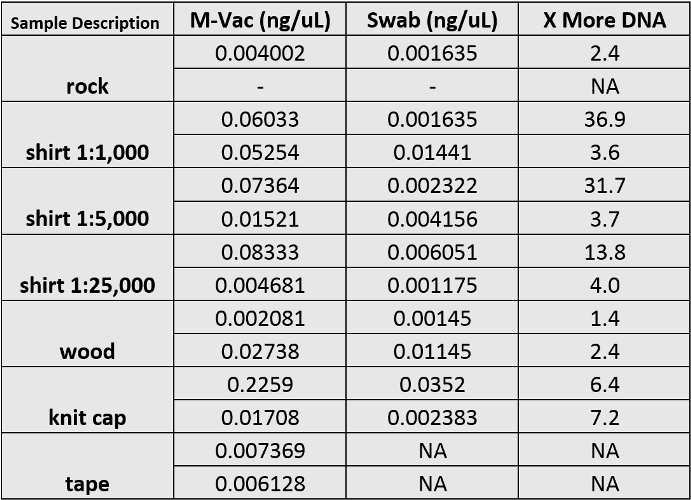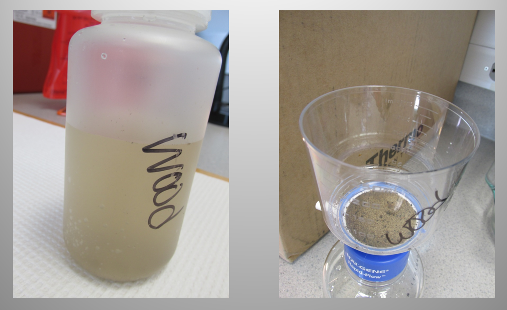
Washington State Patrol Validation
The Washington State Patrol Crime Lab completed an independent & duplicated (done in two separate labs) validation of the M-Vac™. They presented their findings and case studies at the 2015 NWAFS (Northwest Association of Forensic Scientists) conference in Spokane, WA. Their findings as presented in the conference are summarized below.
Five substrates were used in the validation: a rock, cotton t-shirt, pressure treated wood, knit cap and duct tape. The rock, t-shirt and wood were all inoculated with 1 mL 1:1000 dilution of blood. The t-shirt was also inoculated with 1 mL 1:5000 and 1:25000 dilutions of blood. The knit cap and tape were wearer DNA examples. The substrates were sampled with both the M-Vac™ method and the double swab method. More DNA was recovered when using the M-Vac™ than the swab. The results are shown in the table below.

A couple points of interest from the validation are the fact that the M-Vac™ successfully collected DNA material from the sticky side of duct tape and the fact that there were no inhibition or amplification issues for the dirty wood samples shown in the photos below.

Additional items from the study include the following. No contamination was found in blank M-Vac™ collections. When collecting from items smaller than an orange, the items should be placed in a tray and any additional liquid washed off the item can be collected from off the tray. A small supplemental study was done using 1:10000 dilution of known semen. 100 uL was spotted onto underwear. It could not be detected using ALS or AP. Collection was done with the cutting, double swab and M-Vac™ methods. The most was recovered by cutting, swabbing, then M-Vac™, but no male DNA was detected in the swab sample. The crime lab is currently utilizing the M-Vac™ on casework where appropriate.
For a copy of the presentation, please contact us by clicking here. We extend our thanks to the WSP Crime Lab for conducting and presenting their research. Photos are also courtesy of WSP.
Disclaimer: Points of view in this document are those of the authors and do not necessarily represent the official position or policies of the Washington State Patrol (WSP) Crime Laboratory Division. Certain commercial equipment, instruments and materials are identified in order to specify experimental procedures as completely as possible. In no case does such identification imply a recommendation or endorsement by the WSP nor does it imply that any of the materials, instruments or equipment identified are necessarily the best available for the purpose.